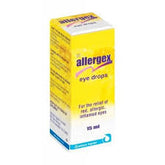Fungal nail infection
Fungal nail infections, also known as onychomycosis, are common infections affecting the fingernails or toenails. They are caused by various types of fungi and can lead to thickened, discolored, and brittle nails. This guide explores the causes, symptoms, diagnosis, and treatment options for fungal nail infections.
Definition
A fungal nail infection occurs when fungi infect one or more nails, typically starting at the edge of the nail and spreading deeper into the nail plate. This can cause discoloration, thickening, and crumbling of the nail.
Symptoms
Symptoms of a fungal nail infection may include:
- Discoloration: Yellow, white, or brownish discoloration of the nail.
- Thickened Nails: Nails become thick and difficult to trim.
- Brittleness: Nails become brittle, crumbly, or ragged.
- Distorted Shape: The nail may change shape and become distorted.
- Odor: A slight foul smell may be present.
- Separation: The nail may lift from the nail bed (onycholysis).
Causes
Fungal nail infections are typically caused by dermatophytes, yeasts, or molds. Common causes include:
- Dermatophytes: The most common fungi responsible for nail infections.
- Yeasts: Such as Candida species, which can infect nails.
- Molds: Non-dermatophyte molds that can also cause infections.
Risk Factors
Several factors can increase the risk of developing a fungal nail infection:
- Age: Older adults are more susceptible due to slower nail growth and reduced blood circulation.
- Sweaty Feet: Wearing shoes that don't allow for proper ventilation can create a moist environment for fungi to thrive.
- Walking Barefoot: In damp communal areas like pools, gyms, and showers.
- Nail Injuries: Trauma to the nail or surrounding skin.
- Chronic Conditions: Such as diabetes, peripheral artery disease, or a weakened immune system.
- Poor Nail Hygiene: Not keeping nails clean and dry.
Diagnosis
Diagnosing a fungal nail infection involves:
- Visual Examination: Inspecting the affected nails for characteristic signs of infection.
- Nail Clipping: Sending a sample of the infected nail to a laboratory for microscopic examination or culture to identify the specific type of fungus.
Treatment Options
Treatment for fungal nail infections can be challenging and may include:
- Topical Antifungal Medications: Creams, gels, or nail lacquers applied directly to the affected nails. Examples include ciclopirox and efinaconazole.
- Oral Antifungal Medications: More effective for severe or persistent infections. Examples include terbinafine and itraconazole.
- Laser Therapy: Uses focused light to destroy the fungus.
- Nail Removal: In severe cases, surgical removal of the nail may be necessary to treat the infection.
Prevention
Preventing fungal nail infections involves good nail hygiene and proper foot care:
- Keep Nails Clean and Dry: Regularly wash and dry your feet and hands thoroughly.
- Wear Proper Footwear: Choose breathable shoes and moisture-wicking socks.
- Trim Nails Properly: Keep nails trimmed and filed.
- Avoid Walking Barefoot: In communal areas such as showers, pools, and locker rooms.
- Disinfect Nail Tools: Regularly clean and disinfect nail clippers and files.
- Change Socks Regularly: Especially if your feet sweat a lot.
Complications
If left untreated, fungal nail infections can lead to complications such as:
- Pain and Discomfort: In the affected nails and surrounding skin.
- Spread of Infection: To other nails, skin, or other parts of the body.
- Nail Damage: Permanent damage or loss of the nail.
- Secondary Bacterial Infections: Particularly in individuals with diabetes or weakened immune systems.
Conclusion
Fungal nail infections are common but manageable with proper treatment and prevention strategies. Recognizing the symptoms early and seeking appropriate medical treatment can help prevent complications and restore healthy nails.
In summary, maintaining good nail hygiene, wearing proper footwear, and avoiding walking barefoot in communal areas are key to preventing fungal nail infections. If you suspect a fungal nail infection, consult a healthcare professional for diagnosis and treatment options.
For individuals dealing with fungal nail infections, early intervention and adherence to treatment regimens are crucial for effective management and recovery. Taking preventive measures can help avoid recurrent infections and maintain healthy nails.
- Complication of Fungal nail infection
- Diagnosis of Fungal nail infection
- Fungal nail infection
- Fungal nail infection myths
- How is Fungal nail infection treated?
- Medicine for Fungal nail infection
- Remedies for Fungal nail infection
- Support for Fungal nail infection
- Symptoms associated with Fungal nail infection
- The best British Online Pharmacy
- Top 10 UK Pharmacies
- Treatment for Fungal nail infection
- What causes Fungal nail infection
- What is Fungal nail infection
- Where can I buy medicine for Fungal nail infection in the UK
- ZimSeller Pharmacy



















